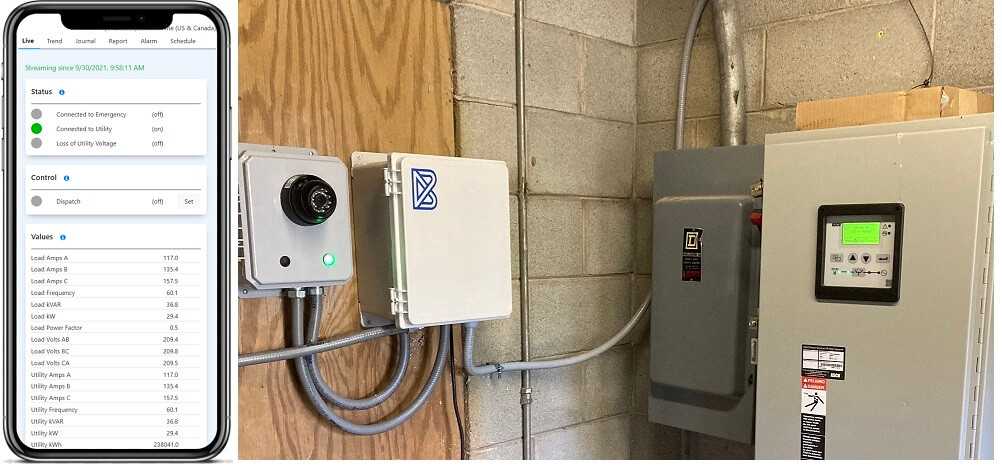IoT for Sustainability: Examples and Best Practices
The Internet of Things is the answer to lots of modern issues: it saves the environment and also allows businesses to save money.
According to Fortune Business Insights, the global IoT market is expected to rise from $478 billion in 2022 to $2,465 billion by 2029, growing at a CAGR of 26.4%. This is no surprise, as the Internet of Things is one of the most multi-purposeful technologies in the world: it makes our homes smart, entertains us, helps to automate operations at factories, and tracks human health.
But this is not all — an IoT environment can also help businesses be sustainable, and not only take care of the environment but also save massive amounts of money and resources. If you want to know how to develop an app for the Internet of Things, you’re in the right place.
In this article, you’ll learn about the most common use cases for the Internet of Things sustainability, and find out how you can use this technology to your advantage.
How the Internet of Things can impact the planet and sustainability
What is IoT sustainability? It is an ecosystem of connected devices that use sensors to track valuable information about the environment, resource usage, and any malfunctions that drain resources.
The data from sensors is processed in the hub — a “brain” of the system that analyzes the data and provides people with valuable insights on their system work, as well as alerts them if something needs immediate attention.
According to Fortune Business Insights, the global IoT market is expected to rise from $478 billion in 2022 to $2,465 billion by 2029, growing at a CAGR of 26.4%
The Internet of Things is one of the largest enabling technologies in digital transformation, according to the World Economic Forum which explores the benefits of this technology in their report IoT Guidelines for Sustainability. The environmental impact of IoT includes:
- Efficient resource management
- Industry operation automation
- Waste reduction
- Pollution tracking
- Lower energy bills
With IoT sustainability, you can not only take care of the environment but also make money, just like dozens of IoT startups that help industrial plants, cities, and even individual homes to manage resources more efficiently.
Let’s talk about the most popular use cases for sustainable IoT and discuss the companies that have already found effective ways to benefit from the positive environmental impact of IoT.
IoT sustainability use cases
Water use
Right now humanity is on the brink of a freshwater crisis, and this is where IoT can become a solution. The IoT sensors combined with a powerful software system can monitor water consumption and also assess water quality anywhere from smart homes and smart cities to large farms and factories.
The water use on farms and in individual households can be controlled with sensors that monitor humidity levels in air and soil, as well as detect leaks and monitor the overall levels of consumption.
Wexus is one of the companies that help users track irrigation pumps and buildings, and send alerts if water pumps or pipes need repair. This helps to minimize costs on water, build smart irrigation schedules, and make the water use as efficient as possible.
Energy efficiency
The principles of smart energy are becoming increasingly popular. Smart energy uses IoT systems to track energy consumption, predict the electricity demand in certain areas, and make its usage more efficient. Consequently, this helps individuals and organizations significantly reduce energy costs.
Green Internet of Things systems can distribute electricity from various energy sources depending on their price, availability, and efficiency. According to the World Economic Forum report, IoT can help the world save over 1.3 trillion MWh of electricity by 2030. Implementing IoT in city buildings and infrastructure, as well as using smart transportation, will lead to lower electricity bills for government, businesses, and private consumers.

Blue Pillar is one of the companies that specialize in IoT power and energy management. They provide companies with valuable information about their energy needs and offer ways to optimize their current consumption. The industries that benefit from the services of Blue Pillar include local and federal governments, research and military labs, healthcare organizations, and educational institutions.
Waste management
According to the UN Environment Programme, in the US 30% of all food goes to waste. Food worth $48 billion is thrown away, and about half of the water that’s used to produce that supply also goes to waste.
In the UK, on average 6.7 million tonnes of food is wasted each year, and this accounts for 32% of all food purchased by UK households. According to the study, 61% of food waste can be avoided if it had been better managed.
How IoT can help with the waste of food, water, electricity, and other resources? Sensors installed in warehouses can track supply, and AI-powered systems then analyze the historical sensor data to predict the demand in the future. IoT devices can also detect leaks and determine how many resources are really needed to fulfill the demand. This is especially true for agriculture that I’ll talk more about just now.
Precision agriculture
Agriculture is the largest human use of water. And its largest waste also happens on farms and fields. Depending on the industry, farms lose around 15-35% of their resources. Precision agriculture is a set of practices that use technology to minimize losses and allocate resources wisely.
IoT devices such as humidity sensors, smart water pumps and irrigators, drones, harvest robots, and AI-powered cameras allow farmers to predict their needs for water, detect diseases on crops, pick the optimal pesticides for their plants, monitor soil condition, and address any issues on the farm with a high level of precision.
Agriculture is currently one of the biggest sectors that can benefit from the sustainable IoT, and not only help the world to reduce freshwater consumption, but also optimize their processes and lower the cost of food production.
Wildlife perseverance
The extinction of animal species is sad in itself, but it’s also really harmful to our planet. IoT is helping wildlife preservation organizations all over the world to study animals, and track their migration, mating, and feeding habits.
Machine learning and AI-powered drones with cameras, motion sensors, and other IoT devices can map large areas, detect changes in wildlife populations, find poaching paths and reduce poaching.
Air pollution reduction
There are several ways IoT technologies can help reduce air pollution and fight climate change. Factories that are responsible for air pollution can track their CO emissions by placing special air control sensors on their pipes. As many countries now have limits on industrial emissions, factories and plants are supposed to measure their emissions in order to comply with the law.
IoT sensors are used for air quality monitoring and alerting people when the concentration of harmful gases is about to exceed the norm. These sensors can be used at the factories and in cities, to track the ecological situation by processing large amounts of data that comes in from each IoT device in the area.
Another large source of air pollution is transportation, and IoT can help with this as well. Sensors, built into the city infrastructure can help to reduce the number of idle cars by optimizing routes for drivers, managing the traffic load, and more.
AI-based simulations, IoT-based traffic design, smart traffic signal controls, and smart roads are things that cities can use to optimize traffic and consequently reduce air pollution from vehicles.
Maritime cargo shipping
Most goods are transported by sea, and each second a large cargo ship burns hundreds of tons of fuel and emits lots of harmful substances into the water. Any delay in their movement costs billions of dollars and even more in environmental harm.
IoT devices for cargo tracking can be used to predict issues, optimize routes and wait times, and make the supply chain more sustainable. Logistics companies use IoT systems to improve shipment schedules. Real-time data about the shipping process can help people to take informed corrective actions and contact the right people to resolve any issues.
As you can see, IoT technology helps in all kinds of ways to fight climate change and wasted resources. In order for it to work correctly, you need to involve specialists in IoT device management, IoT development, software engineering, and IoT hardware production.
Final thoughts
The Internet of Things is a technology that helps humanity make informed decisions based on real-time data, and automate lots of processes that happen every day in places as small as our houses and as large as factories and industrial sites.
The IoT technologies for sustainability can solve hundreds of issues with ecology that we face as a humanity, and also help businesses save significant amounts of money on resources that are being lost during their work.
If you want to learn more about how technology can help your business become more sustainable, don’t hesitate to contact us. We can consult you on how to build a smart home app or a large system for your enterprise with sustainability in mind. We’ll help you build a green business that uses each resource at your disposal to its fullest potential.

